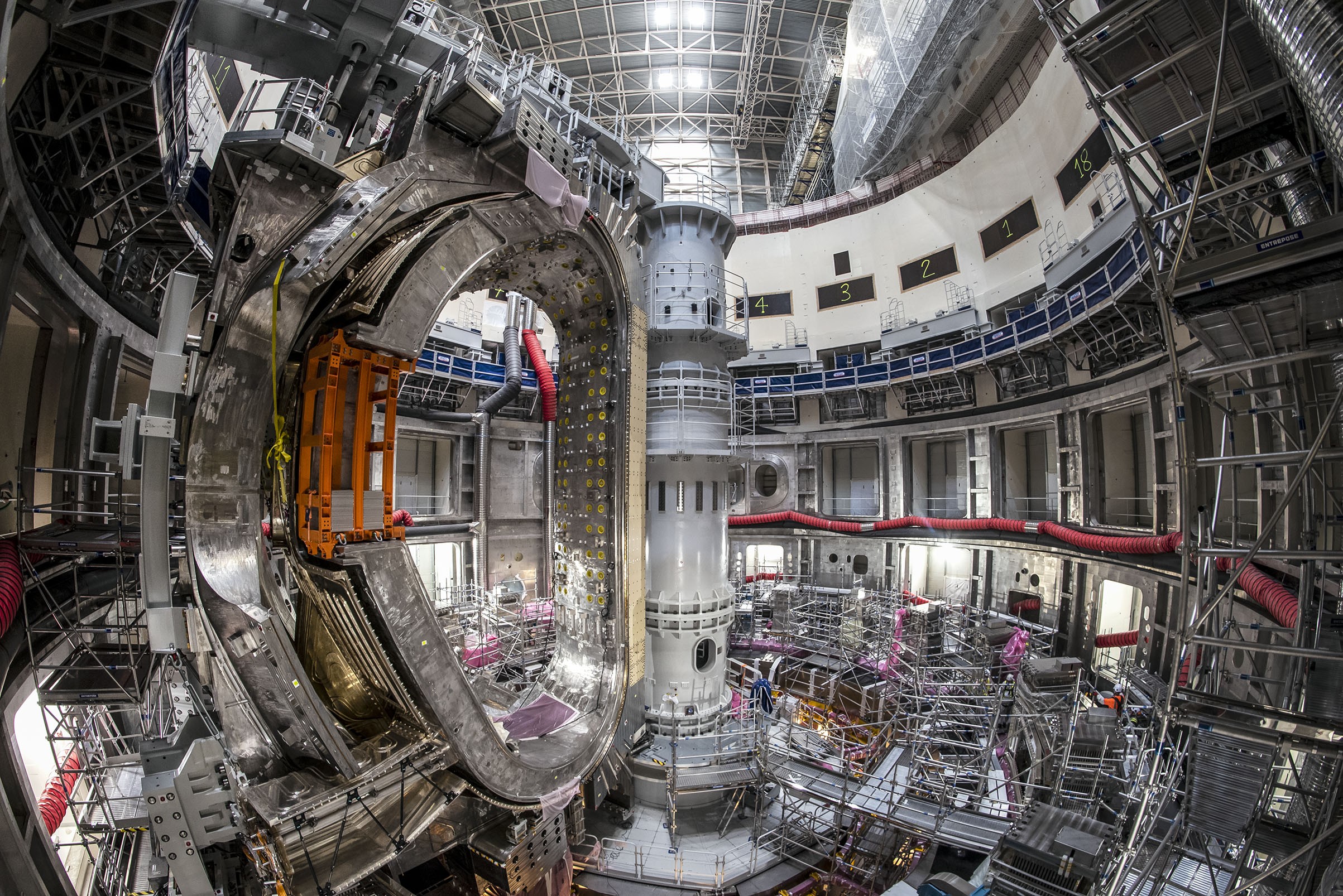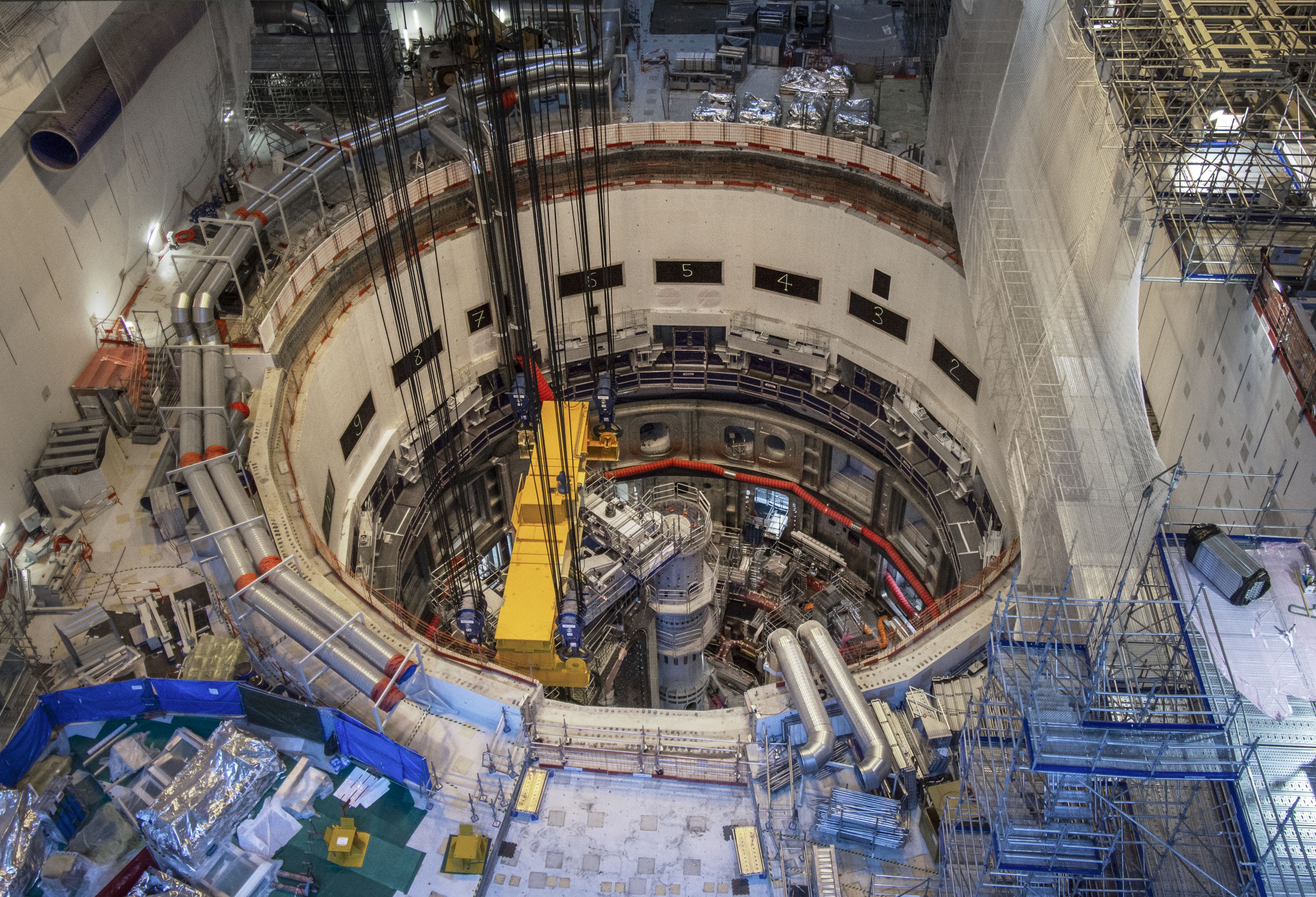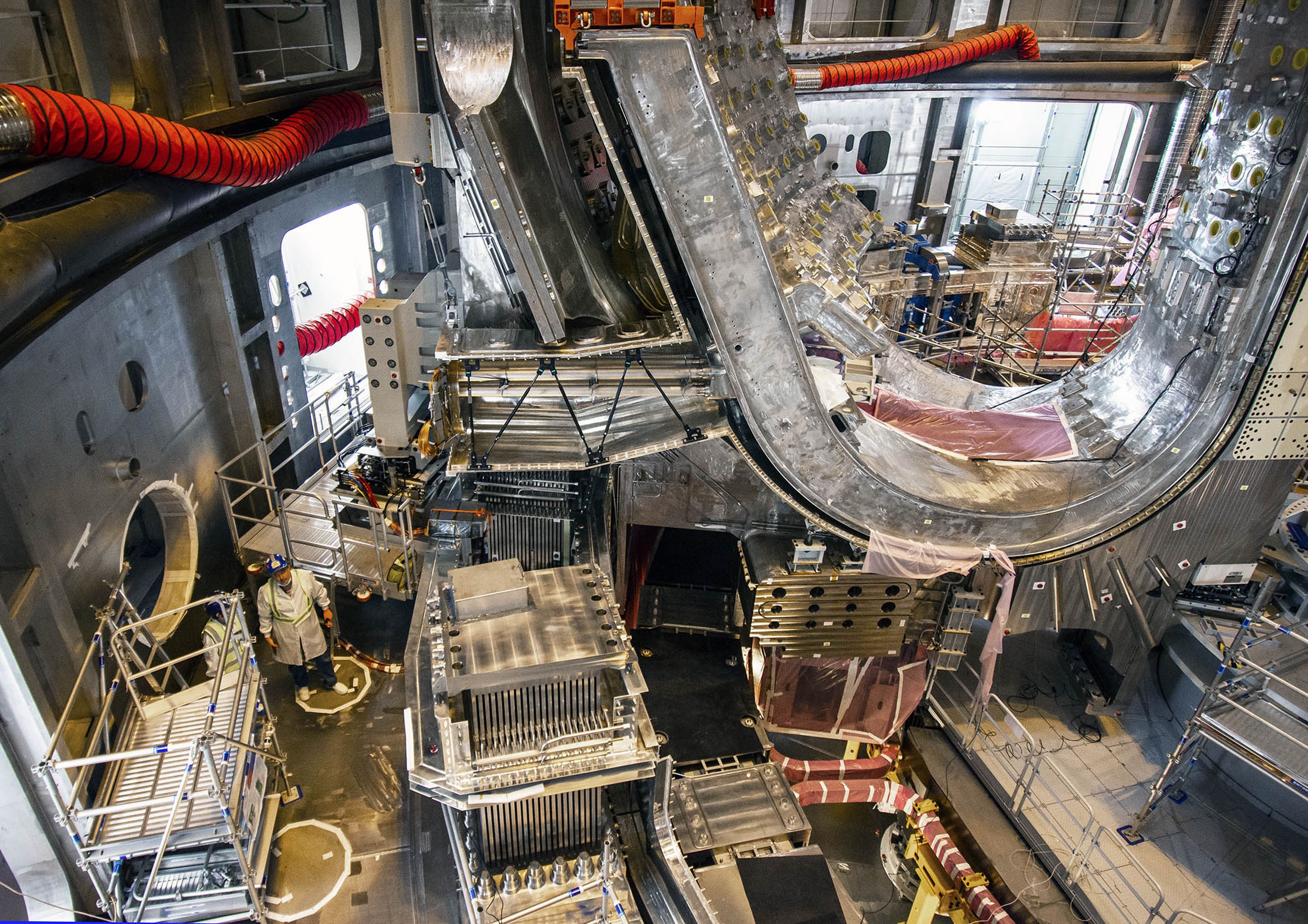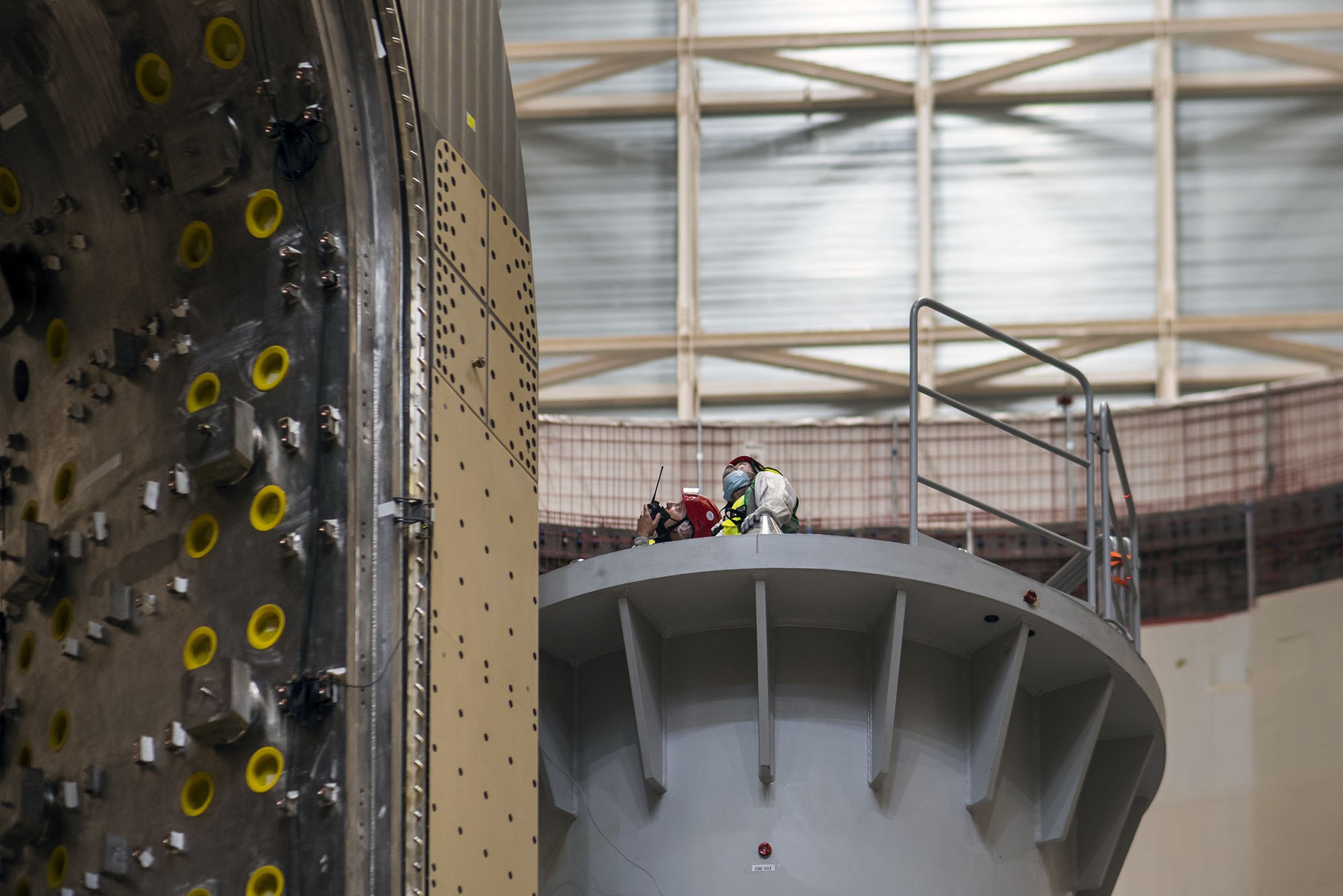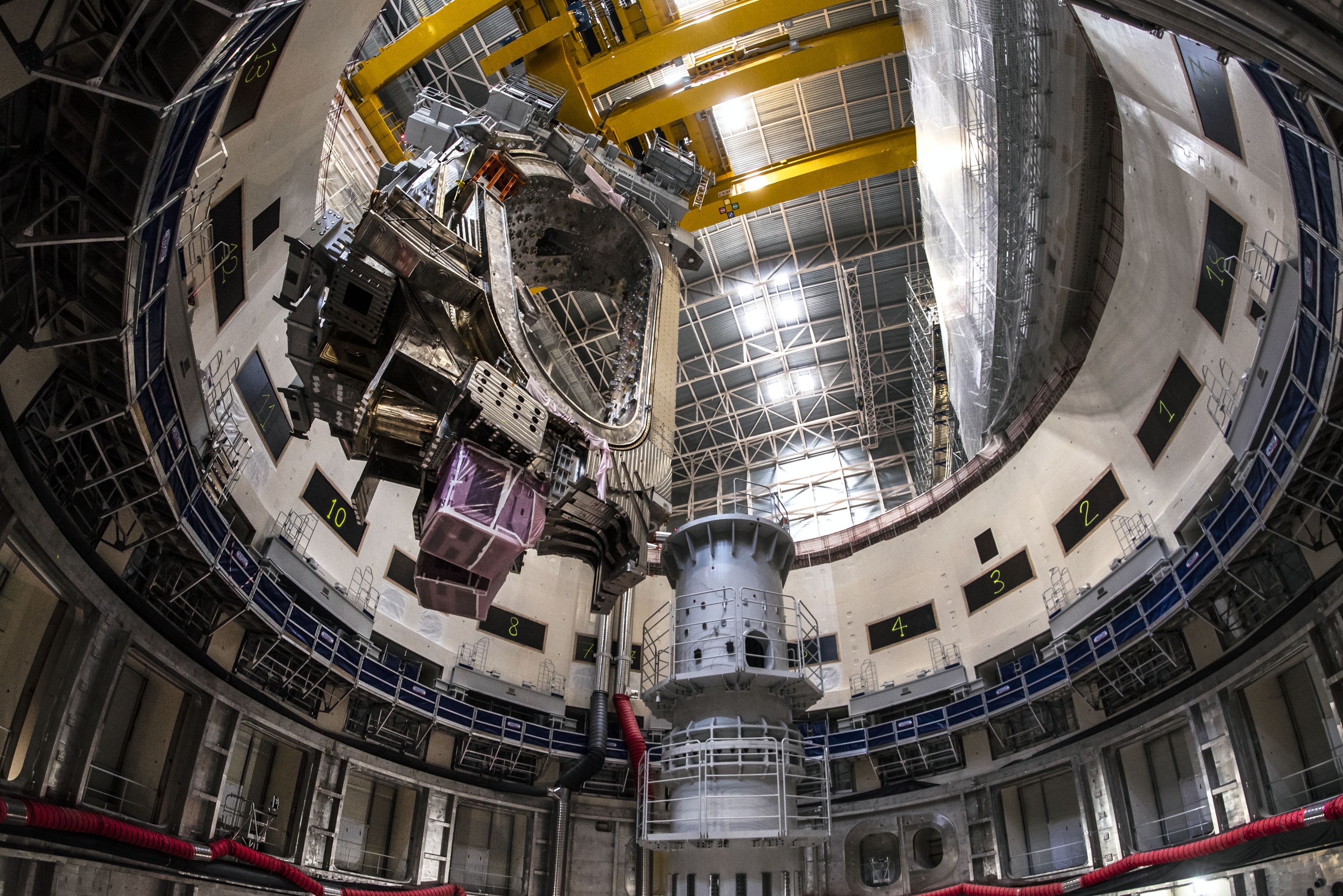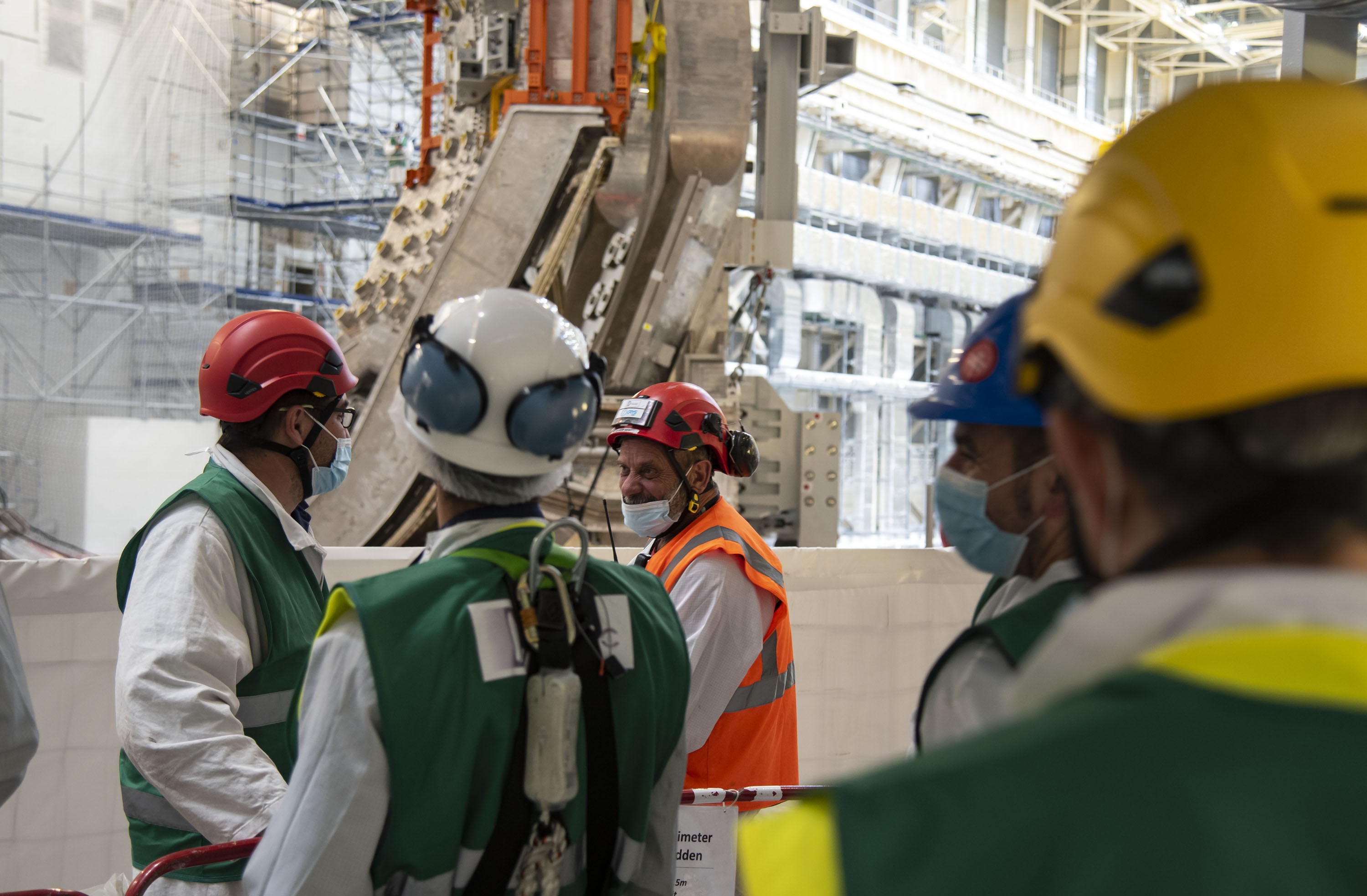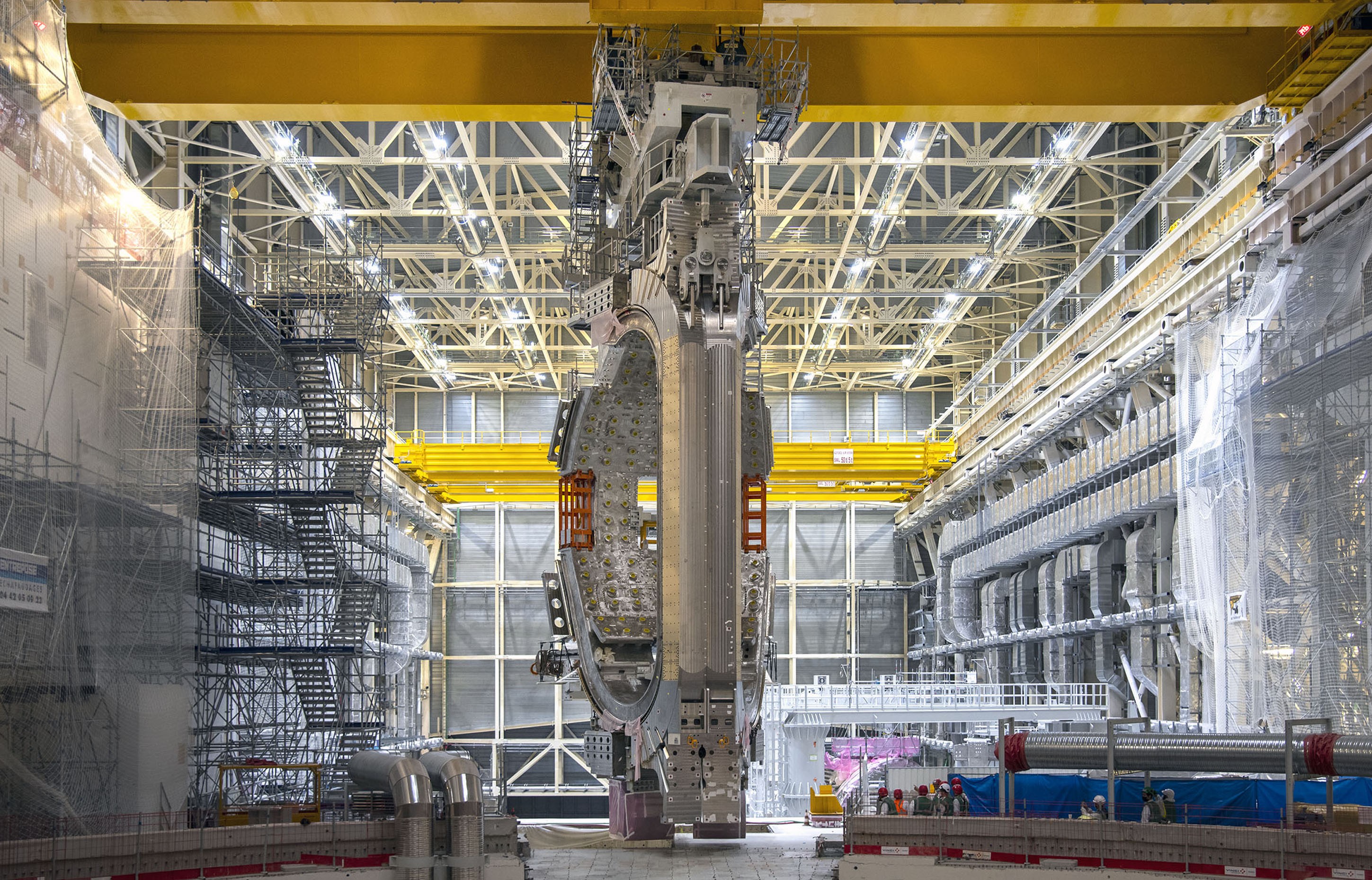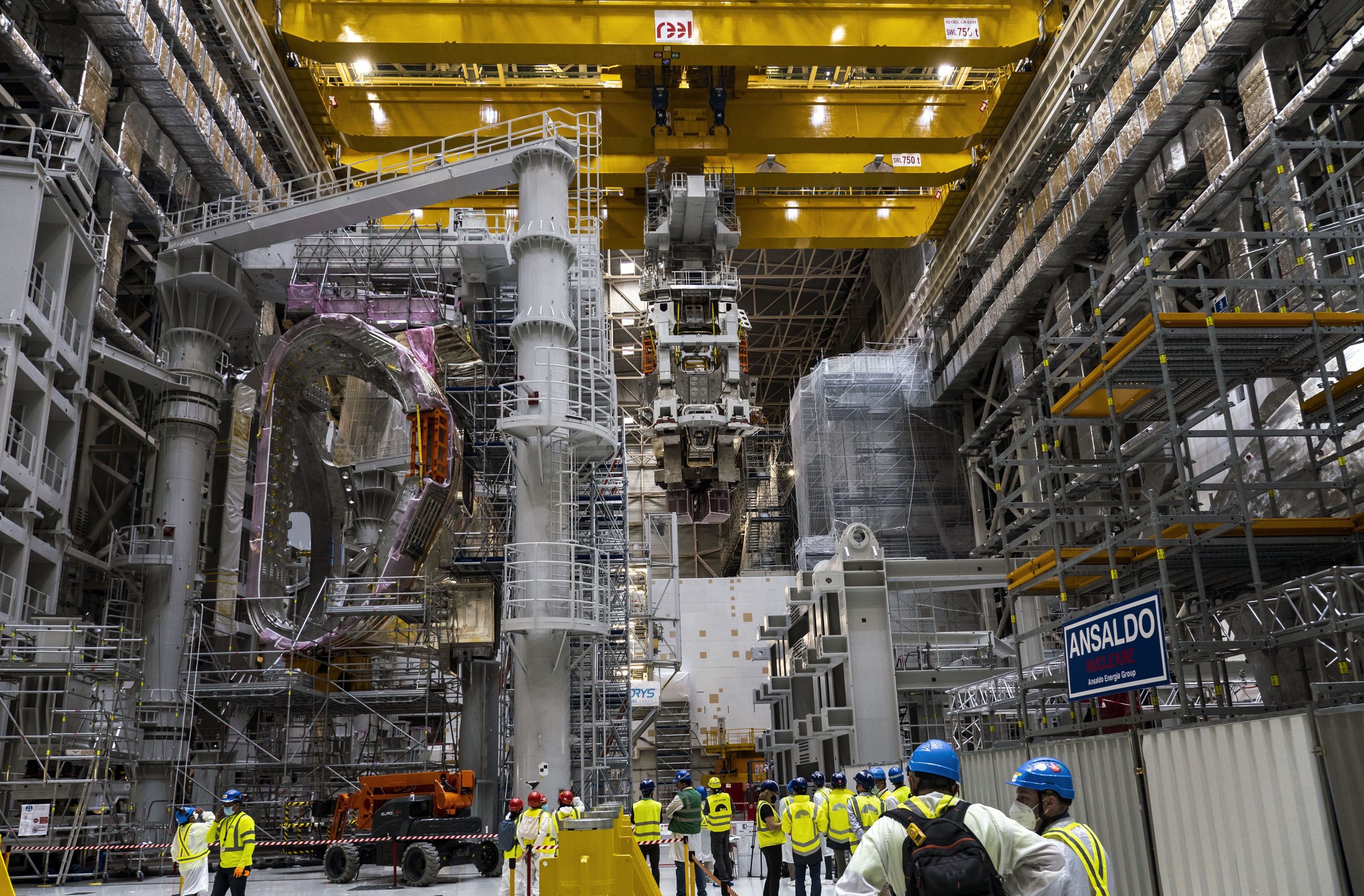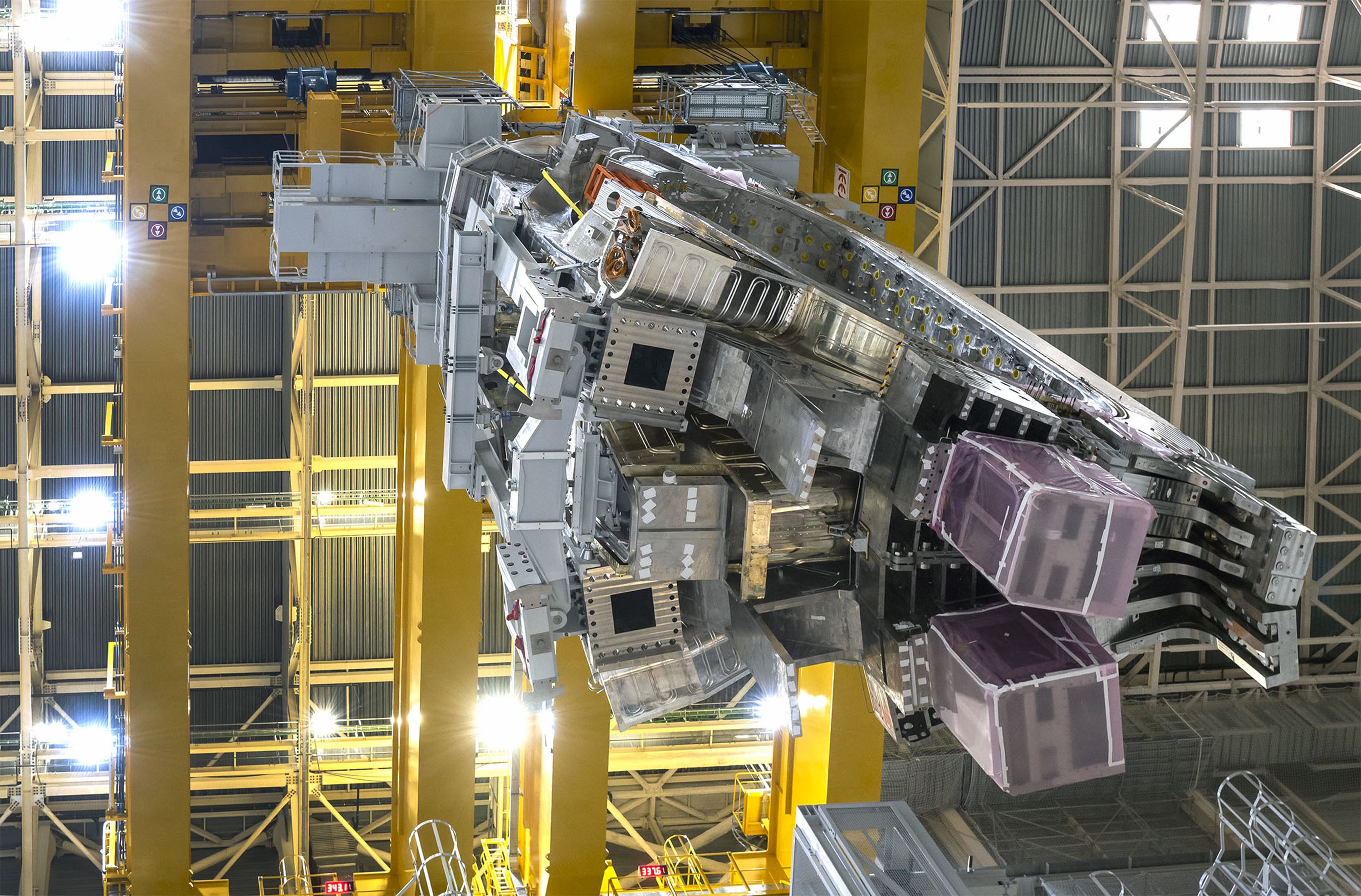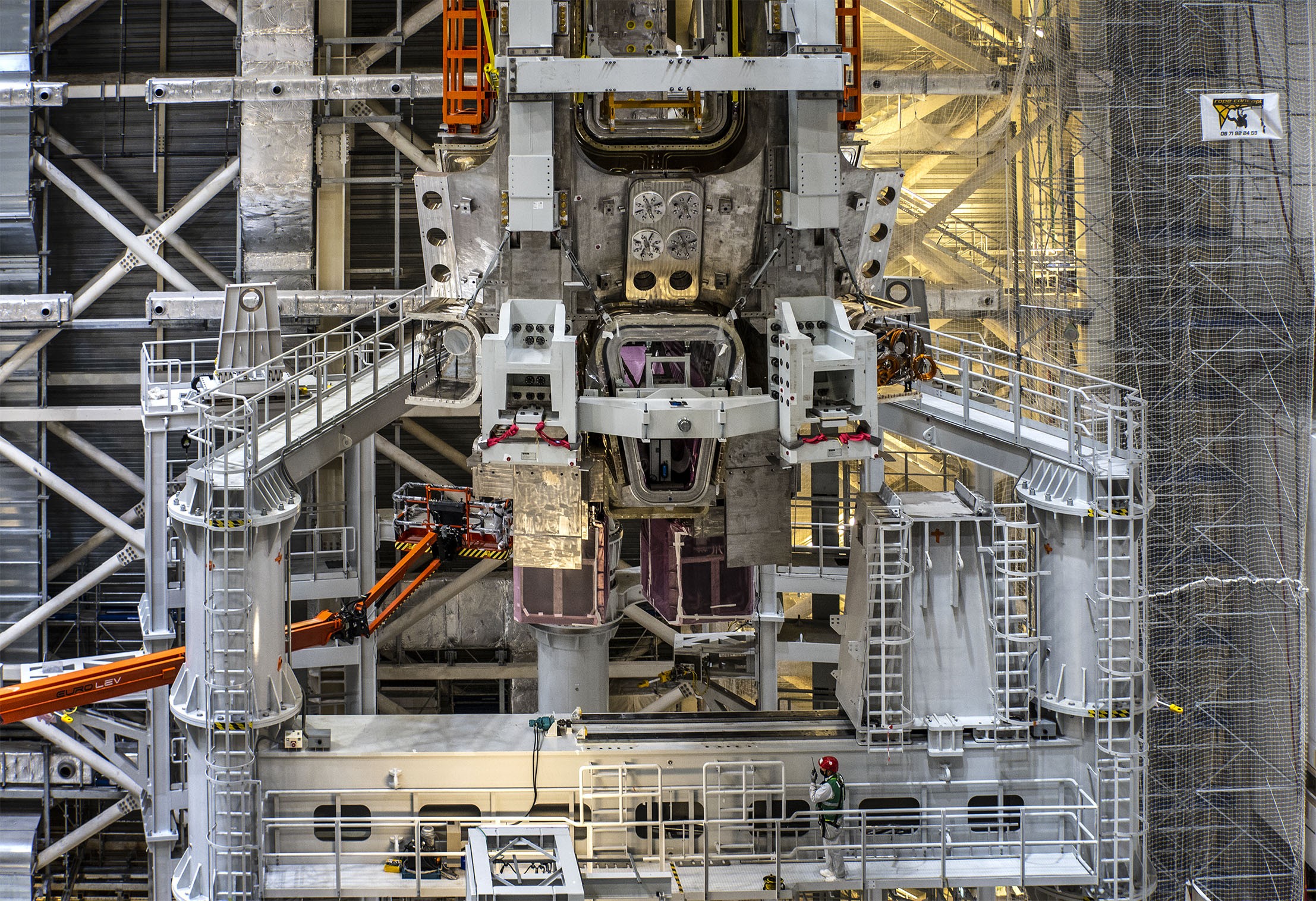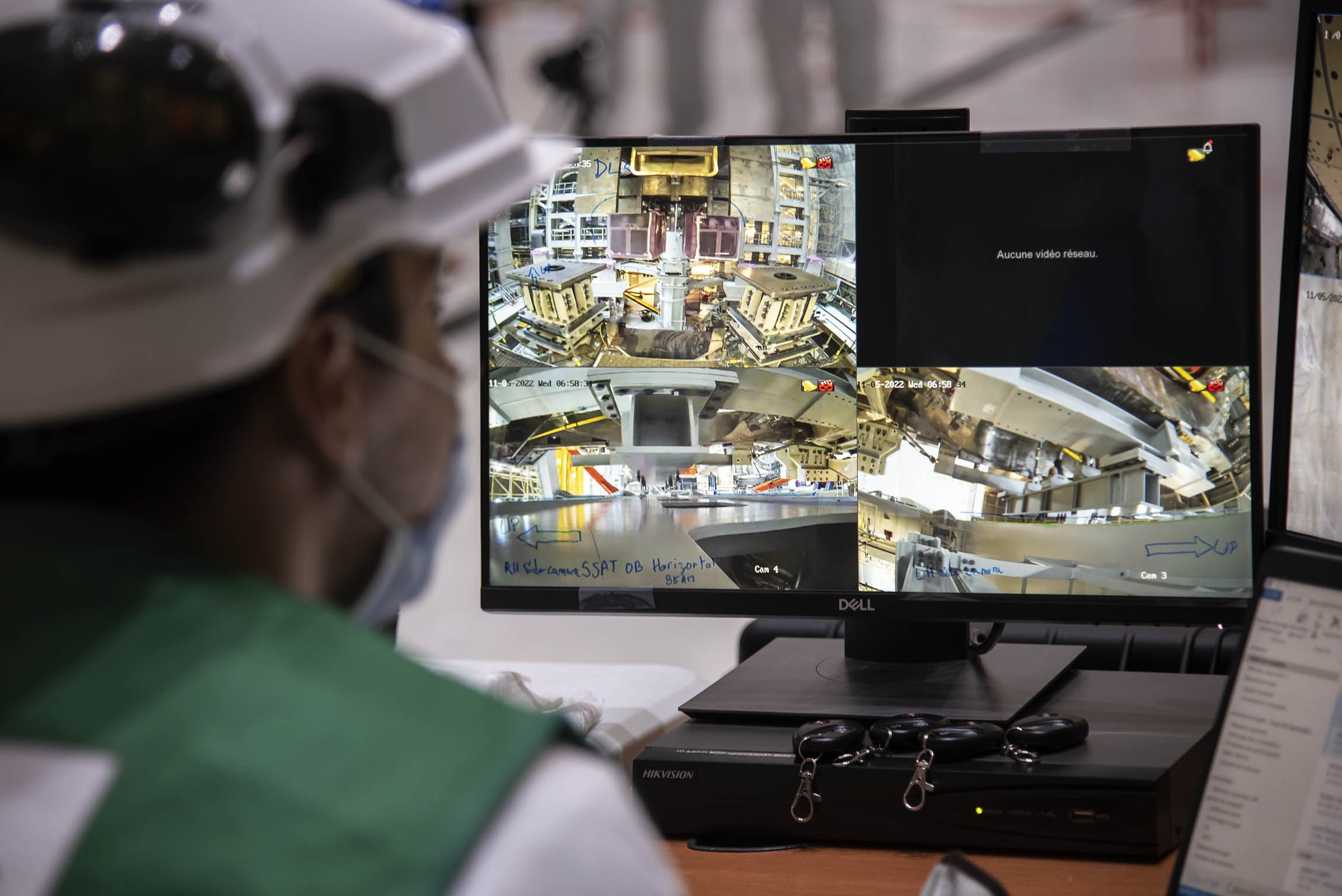The "module" has landed
This "module" was not designed to land on the Moon. But it was as complex a piece of technology, requiring as much precision in its handling as the famed "lunar modules" of the Apollo project that made history more than 50 years ago. In the ITER world, a "module" is an assembly of one vacuum vessel sector, two vertical D-shaped coils and corresponding thermal shield panels, plus all kinds of piping and appendices that bring the sub-component's total mass to 1,380 tonnes—the equivalent of four fully-loaded Boeing 747s. On 11-12 May, the first of the nine modules required for the tokamak's torus-shaped vacuum vessel was slowly extracted from the sub-assembly tool, lifted and transported over the wall separating the Assembly Hall from the machine assembly pit, and positioned with sub-millimetric precision on its supports. Although the machine assembly sequence has offered many spectacular operations since May 2020, the lifting and landing of this first sector module eclipsed them all. It was both a magnificent performance and a unique demonstration of technological mastery.
The long-expected operation was more than a year in planning. It tested the limits of the building's structure, of the overhead crane's lifting capacity, of the complex rigging's manoeuvrability and, perhaps most of all, of the coordination of a 50-person team belonging to half a dozen different companies and organizations. At each and every stage of the component's journey—from the pre-assembly tool to the final resting position in the assembly pit—clearances were minimal. It was indeed an extraordinary spectacle to watch: the massive load practically grazing the different structures it encountered on the way to its final destination. Four centimetres of lateral clearance during the extraction procedure from the sub-assembly tool, 20 centimetres vertically as it passed over the pit wall, 7 centimetres during lowering ...
Due to the inevitable "swing" created by the pendulum effect, the clearance throughout the whole operation was reduced, down to 5 centimetres in a few positions.
One of the main challenges, considering the composite nature of the load, was to determine its centre of gravity—an essential parameter in guaranteeing the safety and fluidity of the transfer operation. "What we had in fact were two loads in one, each with its own centre of gravity," explains Daniel Coelho, the ITER assembly engineer who coordinated the lifting. "Long before we started the operation, when the module was still inside the pre-assembly tool, we precisely characterized its dimensions and weight, performed calculations, and established 3D models in order to obtain theoretical alignment targets. Theoretical data however, is only a starting point. You don't have an absolute certainty before actually starting to lift, and this is why the pre-lift operation a few days ago was so important."
Like Daniel, the operators involved all have experience in heavy, precision lifts in demanding environments, mostly nuclear. "The difference here is that we are in a first-of-a kind context. We have the quality constraints of the nuclear world, but with highly specific components and extremely tight clearances that require unique lifting equipment, techniques and procedures." How did they overcome such a daunting challenge? "We compensate with thorough calculations and models, the qualification of operations, and exceptional safety measures," smiles Daniel.
But the outcome of such an operation does not rest on technology only. Men and women, working as a perfectly coordinated team—Daniel calls it "a family"—were instrumental in its success. "The contractors had prepared extremely well for every action, and the integration with the ITER Organization teams was faultless."
At the close of the day on Wednesday 11 May, the module, still attached to its rigging, was hovering a few centimetres above its supports. More metrology, some further meticulous adjustments ... and by the following day, the sector module was solidly and precisely moored in its near-final position. Inside the assembly pit, the view was striking. Although only one-ninth of the vacuum vessel torus, the component seemed to dwarf everything around it.
The operation was coordinated by the ITER Organization construction team and its management-as-agent contractor MOMENTUM, and executed by tokamak assembly contractor DYNAMIC SNC (Ansaldo Nucleare; Endel Engie; Orys Group ORTEC; SIMIC; Ansaldo Energia; and Leading Metal Mechanic Solutions SL), crane operator Foselev, and GEATOP metrologists, with the support of APAVE health and safety officers.
Read the press release in English or French.
See the related video in this issue.





